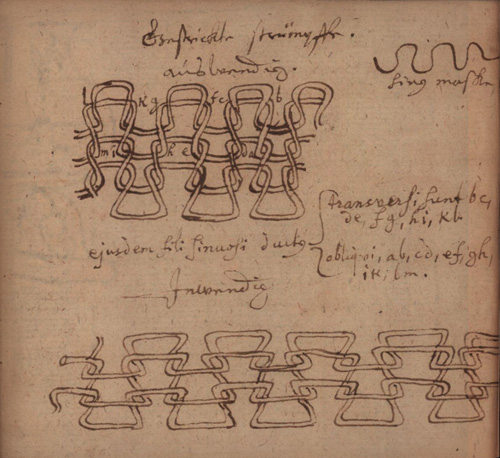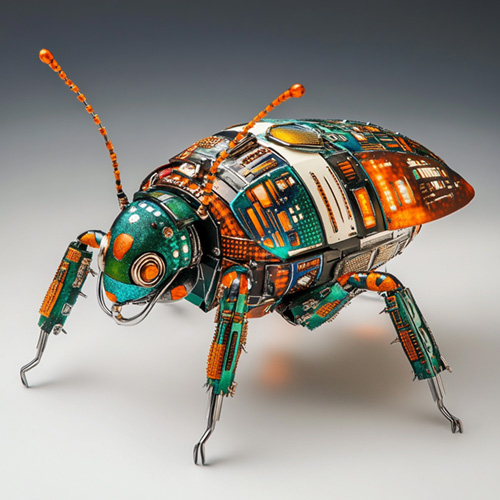Research
Material Epistemologies
My research on material epistemology examines how materials and artisanal practices like folding and weaving historically shaped scientific thought (see my books A History of Folding in Mathematics (2018) and On Joachim Jungius’ Texturæ Contemplatio (2023)). In the former, I have traced the marginalization of folding as a mathematical practice from the 16th to 20th centuries, distinguishing between material practices as epistemic and a technical, hence demonstrating how this duality influenced the exclusion of such practices from mainstream scientific discourse. For instance, while Albrecht Dürer’s polyhedral nets leveraged folding’s material logic, later mathematicians dismissed it as pedagogically limited or artistically trivial. I aim to highlight, to give one example, how 19th-century educators like Friedrich Fröbel reconceptualized folding as a tactile pedagogical method, bridging German Idealist philosophy and crystallography. This tension between haptic experimentation and formal symbolism, I contend, reflects broader historical shifts in how material practices inform abstract knowledge.
On Joachim Jungius’ Texturæ Contemplatio (2023) deciphers Joachim Jungius’ 17th-century manuscript to explore how weaving technologies influenced natural philosophy in the Early Modern Period. Jungius analyzed textiles through various scientific frameworks, classifying weave structures geometrically or investigating their optical properties under microscopes. I question whether this work should be considered as a ‘trading zone’ between artisans and scholars, where textile metaphors permeated ontological debates. Jungius’ attempts to codify weaving reveal how Early Modern thinkers sought to reconcile empirical craftsmanship with scientific reasoning, yet his manuscript remained unpublished, emblematic of the era’s struggle to legitimize material epistemologies. Together, these works underscore a central thesis: artisanal practices are not mere precursors to formal knowledge but constitutive of its evolution, challenging narratives that privilege disembodied abstraction over material ingenuity.
* In this framework, I won the ISF (Israel Science Foundation) Grant: “Expanding Geometry in the 17th century: A Migration of Knowledge from Weaving to Mathematics?” (2021-2025): ca. 90,000 Euro

A drawing of interlaced threads from Jungius’ Texturæ Contemplatio, fol. 33r; © Gottfried Wilhelm Leibniz Bibliothek - Niedersächsische Landesbibliothek.
2. Biomimetic materials, ‘Beyond-Nature’ and the new regimes of writing
Due to the rapid development of materials sciences during the past decades, disciplines such as materials sciences and the research of bioinspired materials have posited themselves as domains whose starting point is inspiration from nature, or more precisely, from various ‘natural’ or biological objects and processes found in the natural world. For example, the technology of CRISPR gene editing developed in the 2010s may be elucidating for such projects, but already such a project points towards a convoluted way of thinking about writing with respect to nature. These projects in materials research go beyond the common conception of the readability of the world, and showcase attempts to program nature. One may therefore suggest that ‘nature’ does not act any more as a limit beyond which one cannot reach further; rather, it is a mark which may be or should be transcended.
In the volume Active Materials (2022; ed. with Karin Krauthausen) as well as in my various papers on the subject, I have attempted to delineate various approaches to this questions, considering such new materials as entities that ‘sense’ and respond to their environment. By examining the modeling of, the experiments on, and the construction of these materials, and by developing a theory of their structure, their collective activity, and their functionality, one may suggest to identify and develop a novel scientific approach to active materials. My research aims to unfold epistemologically various practices of (re)writing nature in the 21st century, by contextualizing, historizing, and reflecting on different notions of matter/materials in the last decades.

An illustration of bio-robotic animal.
3. Plurality of Non-Visualizations: From Hand Made Diagrams to AI-Based Visualizations in Mathematics
My ongoing project on plurality of visualizations explores images and visualization methods across different historical periods and media in mathematical research. Taking for example two-dimensional diagrams or three-dimensional models as technical, pedagogical and epistemic objects, my research aims uncovering their active role in mathematical discovery (see my co-edited volume Model and Mathematics, 2022; ed. with Karin Krauthausen). My work on diagrammatic reasoning explores the complex relationship between visual diagrams and formal mathematical language (see my work on braid diagrams), showing how visualization techniques can be present and absent at the same time (see my monograph Ramified Surfaces, 2022). Continuing my work on the history of folding practices in mathematics (A History of Folding in Mathematics, 2018), my coming work on disappearing materiality examines the algorithmic transformation of mathematical material-visual practices, establishing the theoretical foundation for my current project on AI-generated mathematical imagery.
* In this framework, Dr. Deborah Kent (University of St Andrews) and I have won the University of St Andrews and University of Bonn Collaborative Research Grant on “On Proofs and Partnerships: How AI, Big Data, and Proof Assistants are Transforming Mathematical Practices” for 2026-27 (ca. 22,000 Euro)

A braid diagram represeting a plane curve of degree 6 with six cusps, all of them lie on a conic (Dedò, Modesto. 1950. “Algebra delle trecce caratteristiche: Relazioni fondamentali e loro applicazioni”, p. 257)